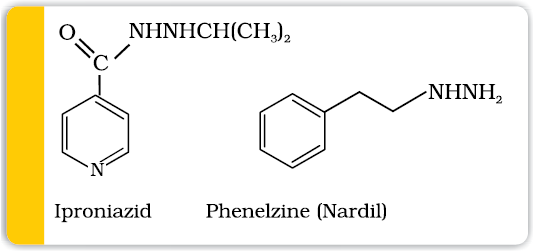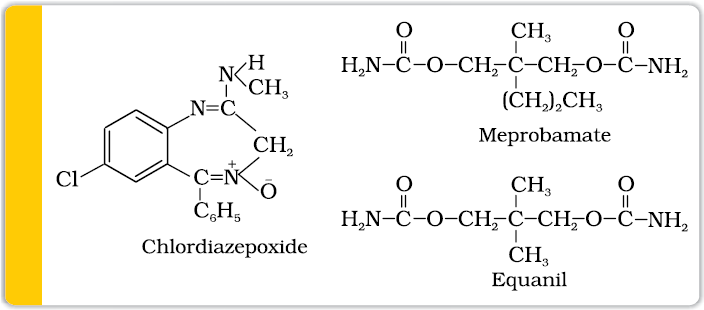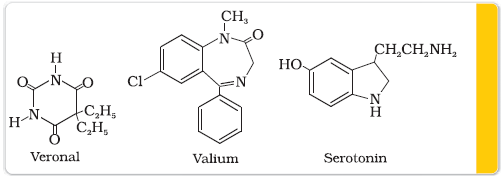(a) Tranquilizers
Tranquilizers and analgesics are neurologically active drugs. These affect the message transfer mechanism from nerve to receptor.
Tranquilizers are a class of chemical compounds used for the treatment of stress, and mild or even severe mental diseases. These relieve anxiety, stress, irritability or excitement by inducing a sense of well-being. They form an essential component of sleeping pills. There are various types of tranquilizers. They function by different mechanisms. For example, noradrenaline is one of the neurotransmitters that plays a role in mood changes. If the level of noradrenaline is low for some reason, then the signal-sending activity becomes low, and the person suffers from depression. In such situations, antidepressant drugs are required. These drugs inhibit the enzymes which catalyse the degradation of noradrenaline. If the enzyme is inhibited, this important neurotransmitter is slowly metabolised and can activate its receptor for longer periods of time, thus counteracting the effect of depression. Iproniazid and phenelzine are two such drugs.

Some tranquilizers namely, chlordiazepoxide and meprobamate, are relatively mild tranquilizers suitable for relieving tension. Equanil is used in controlling depression and hypertension.

Derivatives of barbituric acid viz., veronal, amytal, nembutal, luminal and seconal constitute an important class of tranquilizers. These derivatives are called barbiturates. Barbiturates are hypnotic, i.e., sleep producing agents. Some other substances used as tranquilizers are valium and serotonin.

(b) Analgesics
Analgesics reduce or abolish pain without causing impairment of consciousness, mental confusion, incoordination or paralysis or some other disturbances of nervous system. These are classified as follows:
(i) Non-narcotic (non-addictive) analgesics
(ii) Narcotic drugs
(ii) Narcotic analgesics: Morphine and many of its homologues, when administered in medicinal doses, relieve pain and produce sleep. In poisonous doses, these produce stupor, coma, convulsions and ultimately death. Morphine narcotics are sometimes referred to as opiates, since they are obtained from the opium poppy.
These analgesics are chiefly used for the relief of postoperative pain, cardiac pain and pains of terminal cancer, and in child birth.
